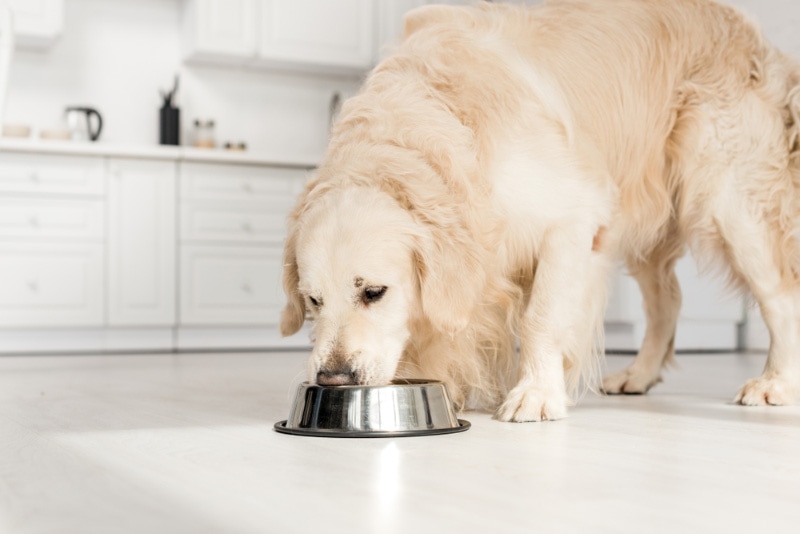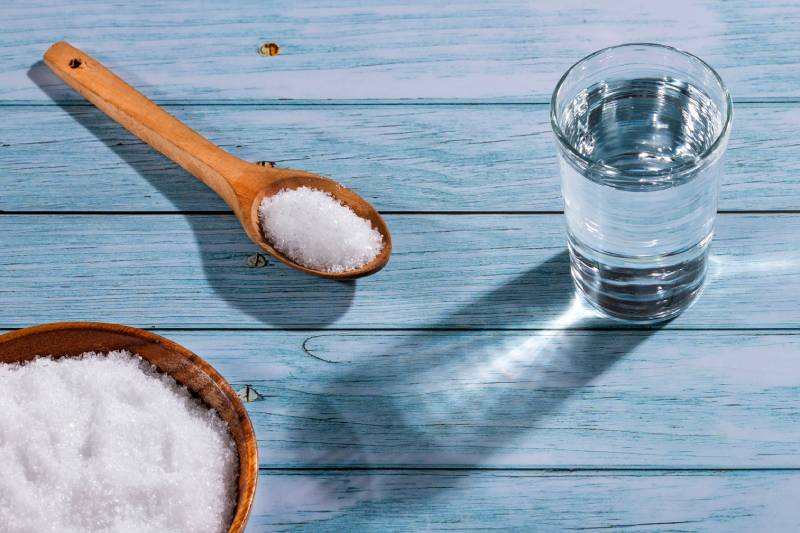Click to Skip Ahead
Salt is a pantry staple, used to cook with, season with, and preserve. Some people can’t enjoy a meal without adding an extra dusting of salt, especially to meaty dishes like steaks, stews, chips, or eggs. It may make you wonder if you should be adding a dash of salt to your dog’s food, but can dogs eat salt?
Salt isn’t strictly toxic for dogs, but it shouldn’t be added to their diet. In large amounts, it can actually be dangerous. In this article, we’ll discuss how much salt is safe, the benefits and risks, and answer all your questions regarding salt in your dog’s diet.
Can Dogs Eat Salt?
Dogs can have salt as an ingredient in their normal diet; in fact, they need to consume a certain amount to maintain their electrolyte balance and keep their bodies functioning normally. It assists in the regular functioning of organs and the nervous system and helps regulate body fluids.
Most dog foods on the market contain the necessary amount of salt, so salt should not be added to their ready-made food. If you add salt to your dog’s food that already includes the appropriate amount of salt, you put your dog at risk of having too much salt, which can be harmful.

Is Salt Safe for Dogs?
Yes, in the right amounts. Your dog’s food should contain a balanced amount of salt, but if you add salt to their food or they access salt from other sources, it can quickly become unsafe.
Too much salt in your dog’s diet can lead to salt toxicity (hypernatremia) and stomach issues, including diarrhea and vomiting.1 Salt toxicity can be frightening for an owner to witness and is better prevented than treated. Severe salt toxicity can lead to seizures and death.
You do not need to add any extra salt to your dog’s food, and you should always avoid offering them treats that are high in sodium
How Much Salt Should Dogs Have?
Salt is listed as sodium on food labels, and according to the Association of American Feed Control Officials (AAFCO), an adult dog needs a minimum of 0.08% sodium in their diet – that’s a pretty tiny number!1 This equates to around 11-28 mg of sodium per pound of body weight, an amount that will be included in any reputable brand of dog food.

How Do Dogs Become Hypernatremic?
You may be wondering how dogs can consume too much salt if you aren’t adding it to their diet, but unfortunately, it can happen. The leading causes of hypernatremia are:
- Ingesting rock salt or licking salt lamps
- Drinking large amounts of salt water
- Ingesting salt from homemade playdough
- Water deprivation (dehydration)
Can Dogs Drink Salt Water?
No dog owner should intentionally offer their dog salt water, but it’s a concern for dogs playing on the beach. When your dog has been running and playing in the sun, it may be hard to resist the large body of water that is readily available. Saltwater is not the safest choice for drinking, and it’s best to keep your dog hydrated with fresh water.
Allowing your dog to drink salt water can cause dehydration by pulling water out of the bloodstream and into the intestines. Furthermore, it can trigger vomiting, which can further increase dehydration. A few sips will likely cause no harm, and most dogs won’t enjoy the taste anyway. However, you should discourage your dog from drinking salt water.

What Are the Signs of Salt Poisoning in Dogs?
The signs of salt toxicity can vary depending on the amount of salt that is ingested and the stage of salt toxicity, but it should always be treated as an emergency.
- Vomiting
- Diarrhea
- Decrease in appetite
- Tremors
- Excessive thirst
- Lack of coordination
- Seizures
As we mentioned before, even the mildest signs should be treated as an emergency because as they worsen, seizures may develop, and as seizures worsen, they can lead to coma and death. This occurs when the high sodium levels alter how fluid moves in and out of cells. Initially, the cells shrink, but when the dog drinks a lot of water (which they will want to do if they are hypernatremic), those cells swell, including brain cells; this is where the real danger lies.
FAQ (Frequently Asked Questions)
What Should You Do if Your Dog Had Too Much Salt?
If you suspect or know that your dog has consumed too much salt, you should head to your veterinarian immediately. While it may seem that giving your dog water and diluting the salt content makes sense, it is unfortunately not the case.
Electrolytes help regulate fluid balance, and changing the fluid load rapidly can lead to more serious issues, such as heart failure or swelling of the brain. Your vet can carefully rebalance your dog’s fluids, monitor them, and provide the appropriate treatments.
PangoVet. It’s an online service where you can <b>talk to a vet online</b> and get the personalized advice you need for your pet — all at an affordable price!
</p>
<div class="su-button-center"><a href=https://www.dogster.com/dog-nutrition/"https://pangovet.com/?utm_source=dogster&utm_medium=article&utm_campaign=dog_eat_drink%22 class="su-button su-button-style-default" style="color:#FFFFFF;background-color:#FF6600;border-color:#cc5200;border-radius:9px;-moz-border-radius:9px;-webkit-border-radius:9px" target="_blank" rel="nofollow"><span style="color:#FFFFFF;padding:0px 24px;font-size:18px;line-height:36px;border-color:#ff944d;border-radius:9px;-moz-border-radius:9px;-webkit-border-radius:9px;text-shadow:none;-moz-text-shadow:none;-webkit-text-shadow:none"> Click to Speak With a Vet</span></a></div></div></div>"}" data-sheets-userformat="{"2":513,"3":{"1":0},"12":0}"> If you need to speak with a vet but can’t get to one, head over to PangoVet. It’s an online service where you can talk to a vet online and get the personalized advice you need for your pet — all at an affordable price!

How Can You Prevent Salt Poisoning in Your Dog?
The best way to prevent salt poisoning in your dog is to avoid too many salty foods and ensure your dog always has access to fresh, clean water. You should monitor your dog closely while at the beach and avoid giving them table scraps, treats, or snacks that contain a lot of salt. That includes household products, such as rock salt, playdough, and saline solution.
It is also essential to check your dog’s food labels, or better yet, choose a food recommended by your vet or one that is AAFCO-approved. If your dog doesn’t drink enough water, you can encourage them to drink more water by following these simple suggestions. If your dog is on a dry food diet, you can add wet food and hydrating snacks like watermelon to increase their water intake.
Conclusion
Dogs need salt in their diet, and most dog foods include salt in the correct amounts, so there is no need to add salt to their food. Understanding which foods and products to avoid and what to do if your dog consumes too much salt will keep them safe and healthy.
Featured Image Credit: mkupiec7, Pixabay












